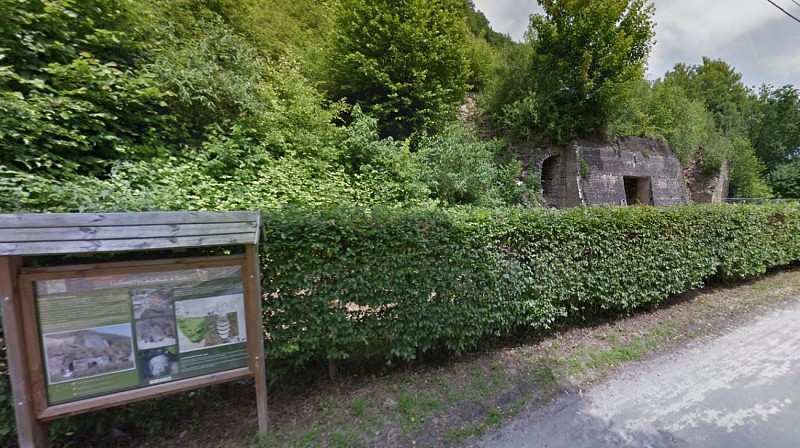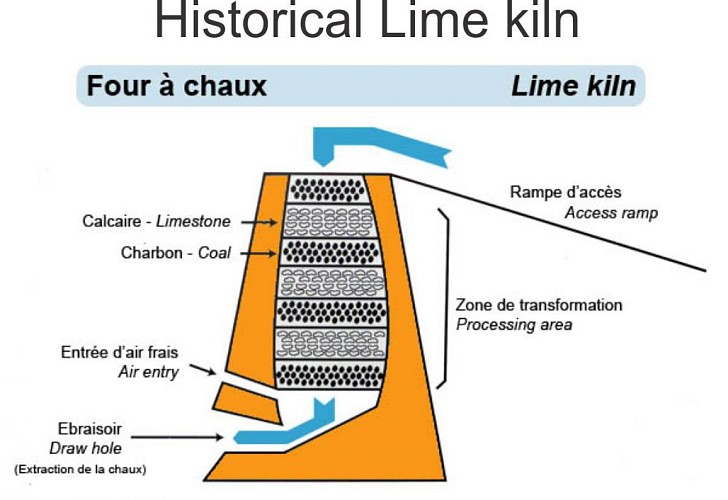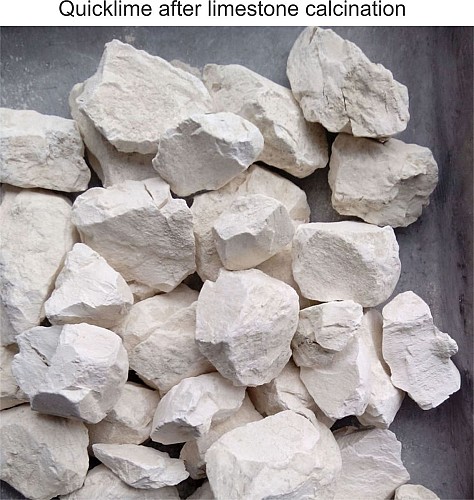Alert
Alerts
Lime kilns of Esneux




Description
The principle of the lime kiln is to calcine limestone (CaCO3) at temperatures of about 900 degrees in order to transform it into lime (CaO) after a CO2 degassing.
CaCO3 => CaO + CO2
Due to its many properties, this lime can then be used in many fields such as :
Agriculture and forestry: improving soil quality
Construction: manufacture of mortar and concrete
Metallurgy: iron, zinc, copper, aluminium metallurgy...
Environment: water and smoke treatment
......And in many other unsuspected applications of our daily life such as in the sheets of paper or in the water we drink!
Discover all these applications through a playful game on:
www.eula.eu/about-lime-and-applications/lime-in-daily-life/
Numerous lime kilns are present along the Ravel (Tilff, Mery, Esneux, Comblain) and testify to the intense industrial activity of the region. Indeed, lime is a product of local importance because its cost increases in proportion to its transport from the source.
In these kilns, limestone rocks are alternated with charcoal in order to ensure continuous calcination of the rocks. Modern lime kilns use natural gas as fuel. They are much more energy efficient and the calcination of limestone is better controlled.
The lime production chain is explained in the video.
Source:
European Lime Association: www.eula.eu/
Technical Information
Altimetric profile
IGN cards
Data author



